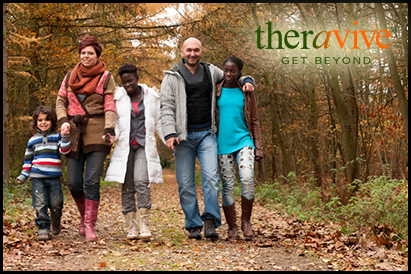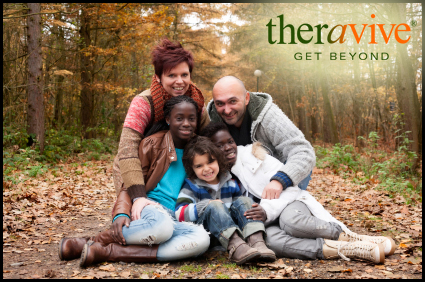 Adoption is a real and wonderful means to creating a family for many people around the world. Through the adoptive relationship, many children have been able to find loving homes and adults have found fulfillment and purpose that they never knew was possible.
Adoption is a real and wonderful means to creating a family for many people around the world. Through the adoptive relationship, many children have been able to find loving homes and adults have found fulfillment and purpose that they never knew was possible.
There is no doubt that adoption is an emotional process for families, from the initial decision to pursue adoption all the way through negotiating childrearing and adulthood. Adoption is not a simple process, but a complex series of interactions that can be frustrating and daunting. Emotionally fulfilling and at the same time taxing, adoptive families almost universally agree that it is an overall enriching life experience that they wouldn’t change. What’s perhaps most unexpected for families is how their experience of the process is emotionally so similar to that experience that their adoptive child experiences (Schofield & Beek, 2006).
Adoption Choices
There are so many choices in the adoptive process. There are questions as to whether or not to have an open or closed adoption, whether to use an agency or to go through the foster care system, adopting a baby or an older child, and whether to seek a child domestically or abroad. The factors affecting which kind of adoption a family chooses are things like the timeline in which they would like to welcome a child into their home, their resources, and the kind of parenting experience they would like to have.
Avenues of Adoptions
There are essentially two paths to adoption in the United States - government and private. Government facilitated adoptions go through the Department of Social Services, where private adoptions are facilitated by adoption agencies or adoption lawyers.
The reality of the adoptive world is that there are many more older children available for adoption than infants. This is true in the foster care system as well as in international adoption. In addition, a family might find a good match if they seek a child with special needs. Older children and children with special needs both offer a shorter timeline than infants because there are so many more in need of homes. It can be a years long process to find a child that matches with a family, particularly for families interested in pursuing a birth mother and adopting and infant.
There is also the choice of going through the foster care system, which is the government system in the United States for homing children. Quality foster parents are a high need in most areas and families can welcome a child into their home quickly through this avenue. Permanent placement is not guaranteed through the foster care system and children often have complex backgrounds when the come from foster care. However, because of the high need, families can find placement quickly.
International adoption is an incredibly enriching experience for most families. There are many children across the globe who are in need of homes. Recently many countries have slowed their adoptions processes because of cases of abuse or neglect in the process, and it is an expensive option for adoptive families. However, there are wonderful connections to be made through international adoption for most families.
Open vs Closed Adoption
Many parents seeking to adopt a child are worried about the ability of the birth parents to somehow come and take the child away at some future time. They also might worry that connection with the birth family will somehow lead to less of a connection with the adoptive family. This is a completely understandable and natural fear that arises from concerns of inadequacy or rivalry in parents. These fears often lead to parents wishing to have a closed adoption, to essentially erase the previous life of the child. But more and more there is a shift from closed adoption to open adoption as the healthiest and most beneficial option for the psychological health of adopted children. The shift is dramatic, with the trend to openness increasing, both in the number of open adoptions as well as in the amount of openness that there is within each adoption.
Open adoption isn’t one thing. There is a spectrum of options.
-
Completely closed - no identifying information about the birth family is accessible to the adoptive family
-
No contact open adoption - Both sides have access to information through the adoption agency or attorney, but no direct contact is made
-
Parent-to-parent contact only - Picture and written updates about the child are sent to the birth family from the adoptive family, but the only communication occurs between the parents
-
Visitation - The adoptive family and the birth family have visits so that the child gets to know their birth family. This is also along a spectrum, and can mean anything from supervised visits outside of the home and periodically to more informal visitation that fosters close relationships with the birth family.
Each family must decide what is best and most comfortable for them. Parent-to-parent contact is the most popular (Grotevant, Wrobel, Korff, Skinner, Newell, Friese, McRory, 2008) form of open adoption, and that is in large part due to the fact that it keeps the adopted child insulated from their origins, and eases in many ways the fears that so often occur in adoptive families. Most open adoptions are successful.
When considering adopting a newborn, it’s important to remember that new mothers are often keen to have an open adoption so that they might continue to connect with their child. Birth mothers have a great autonomy in choosing adoptive parents for their child, and many are not willing to have a closed adoption. As such, families who wish to adopt children at birth must be willing to bend their expectations if they are committed to finding a birth mother match.
Studies overwhelmingly show that open adoption creates healthy children and families. The reason is that there is not a sense of secrecy, and that the secrecy of a closed adoption is a stressor to both the adoptive parents and to the child. Open adoption relieves that stress and creates an understanding of self in the child (Grotevant et al.,2008)
Bonding with Adopted Children
One of the chief concerns that parents have when adopting a child is how to create that family bond. Children who are adopted often come from backgrounds in which love and nurturing were not present, and the adjustment to a new environment is incredibly stressful for everyone. This is true not only of older children, but of newborns as well.
Adoptive families must necessarily create and environment of empathy, understanding and patience (Schofield & Beek, 2006) in order to engage in a bonding experience with their child. The circumstances from which an adopted child came into the family are things that are outside of the experience of the adoptive parents. It takes time to create a bond with a child. While it would be wonderful for the adoptive relationship to form instantly, that’s realistically not the way that it usually goes.
 Older children have often faced serious struggles in the journey to their new home. Parents need to recognize that it is disorienting and traumatic to have life change so dramatically. Speaking with an empathetic tone and listening with openness are the keys to successfully bonding with older adopted children. Developmental parenting (Perry, 2008) is an effective way for parents to bond with older adoptive children. If a child has been in a challenging or non nurturing environment for an extended period of time, then their chronological age might not match their developmental age. So a 13 year old might function developmentally on the level of a ten year old. Their emotional and psychological development has been slowed due to the life events that have swirled around them. Parents of older children should be aware of this and parent accordingly, pursuing developmentally appropriate activities in order to bond with their child, as opposed to relying on age as an indicator of how to engage their child. In addition, parents of older children should remember that they’ve missed the window of physical contact that creates a bond for so many children to their parents. Seeking out activities that foster physical contact will help adoptive families to create good bonding experiences with their older children. These don’t have to be complex - think in terms of games like Twister or tug of war.
Older children have often faced serious struggles in the journey to their new home. Parents need to recognize that it is disorienting and traumatic to have life change so dramatically. Speaking with an empathetic tone and listening with openness are the keys to successfully bonding with older adopted children. Developmental parenting (Perry, 2008) is an effective way for parents to bond with older adoptive children. If a child has been in a challenging or non nurturing environment for an extended period of time, then their chronological age might not match their developmental age. So a 13 year old might function developmentally on the level of a ten year old. Their emotional and psychological development has been slowed due to the life events that have swirled around them. Parents of older children should be aware of this and parent accordingly, pursuing developmentally appropriate activities in order to bond with their child, as opposed to relying on age as an indicator of how to engage their child. In addition, parents of older children should remember that they’ve missed the window of physical contact that creates a bond for so many children to their parents. Seeking out activities that foster physical contact will help adoptive families to create good bonding experiences with their older children. These don’t have to be complex - think in terms of games like Twister or tug of war.
Children under the age of five who are adopted are at risk for developing reactive attachment disorder (Stryker, 2004). This is especially a worry for children who came from institutions, but also affect children who come from homes in which there has been a pattern of abuse or neglect, or from children who have been bounced around from place to place. Children with this disorder become angry, detached, and are unable to trust others. All of these symptoms tend to be most targeted towards adults. Creating an environment where children can reliably predict what is going to happen is essential in combating reactive attachment disorder (Steinhart, 2012). As the environment becomes more permanent in the life of the child, they feel a sense of belonging and ease and are thus able to bond in with their new families. All of this does very much require patience on the part of the adoptive families.
Bonding with infants offers a whole other set of challenges. Infants require patience and understanding just as older children do. Though they have not been in the world for long, the experience of the womb cannot be underestimated. A child in utero hears the sound of their mother’s voice and those she is speaking to, feels the rhythm of her heart and is familiar with the surroundings that were present during pregnancy. However infants are highly adaptable and adoptive parents of newborns can foster bonding through intentionally creating closeness through as much physical contact as possible during the early weeks of life at home (Bator, 2011).
Adoption is a Great Choice
Whether a family decides to adopt an infant or an older child, adopt is a wonderful way to bring joy into the life of a child and of the adoptive family. Children grow and thrive when they are placed in an environment of love and acceptance, empathy and family connection. Just as birth parents must navigate their way with patience, so to must adoptive parents. And while adoptive families sometimes feel as though they are somehow behind the curve in their journey as parents, in reality they face the same challenges and victories that birth families face.
While it may seem that there are norms to the process and that there must be a right way to go about it, there is in fact no right or wrong answer in the adoptive process, rather there are many options for families to explore in the process. Working through the process is a growth experience for adoptive parents and a hugely rewarding experience for the children that they bring into their families.
There is a beautiful consciousness to the choice of bringing a child into the family with intention. Adoption creates families.
_______________________________________________________________________________________________
Bator, S. M. (2011). Adoptive parents' lived experience of bonding with their adopted infants: A phenomenological study. (Order No. 3466203, Southern University and Agricultural and Mechanical College). ProQuest Dissertations and Theses, 185.
Grotevant, H., Wrobel, G., Korff, L., Skinner, B., Newell, J. Friese, S. McRory, R. (2008) Many Faces of Openness in Adoption: Perspectives of Adopted Adolescents and Their Parents,Adoption Quarterly, Vol. 10, Iss. 3-4.
Perry, G. (2009). Developmental parenting: A guide for practitioners. YC Young Children, 64(1), 96.
Schofield, G., & Beek, M. (2006). Attachment Handbook For Foster Care And Adoption. London, GBR: BAAF.
Stryker, R. J. (2004). Forging family, fixing family: Adoption and the cultural politics of reactive attachment disorder. (Order No. 3165573, University of California, Berkeley). ProQuest Dissertations and Theses, 263-263 p.
Steinhart, M. (2012). Reactive Attachment Disorder in Adopted and Foster Care Children.
The Family Journal October 2012 vol. 20 no. 4 355-360.
About the Author

Autumn Robinson, MA, PhD Candidate
Autumn Robinson is a writer and PhD candidate who lives in the beautiful Blue Ridge Mountains of North Carolina with her husband, three young boys and daughter with special needs. She is a former special education teacher who believes that all people deserve to be treated with dignity and respect. Autumn is the Digital Manager for Vestidd, an innovative cloud based program that helps families with special needs to organize and manage their often complex responsibilities.